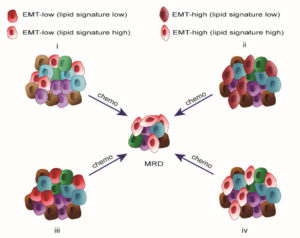Novel lipid gene signature for MRD in Ovarian Cancer

Applications: To identify new targets for therapy in minimal residual disease.
Following chemotherapy, multiple residual disease (MRD) is capable of re-initiating tumours and causing recurrence. Until now, the molecular characterisation of solid tumour MRDs has remained elusive.
Researchers at Oxford have discovered that MRD cells are typically characterised by an adipocyte-like gene expression signature and a portion of them will undergo epithelial mesenchymal transition (EMT).
| Features | Benefits |
|
|
|
|
|
|
|
|
Patented & Available for:
- Licensing
- Co-development
- Consulting
about this technology
© Oxford University Innovation

